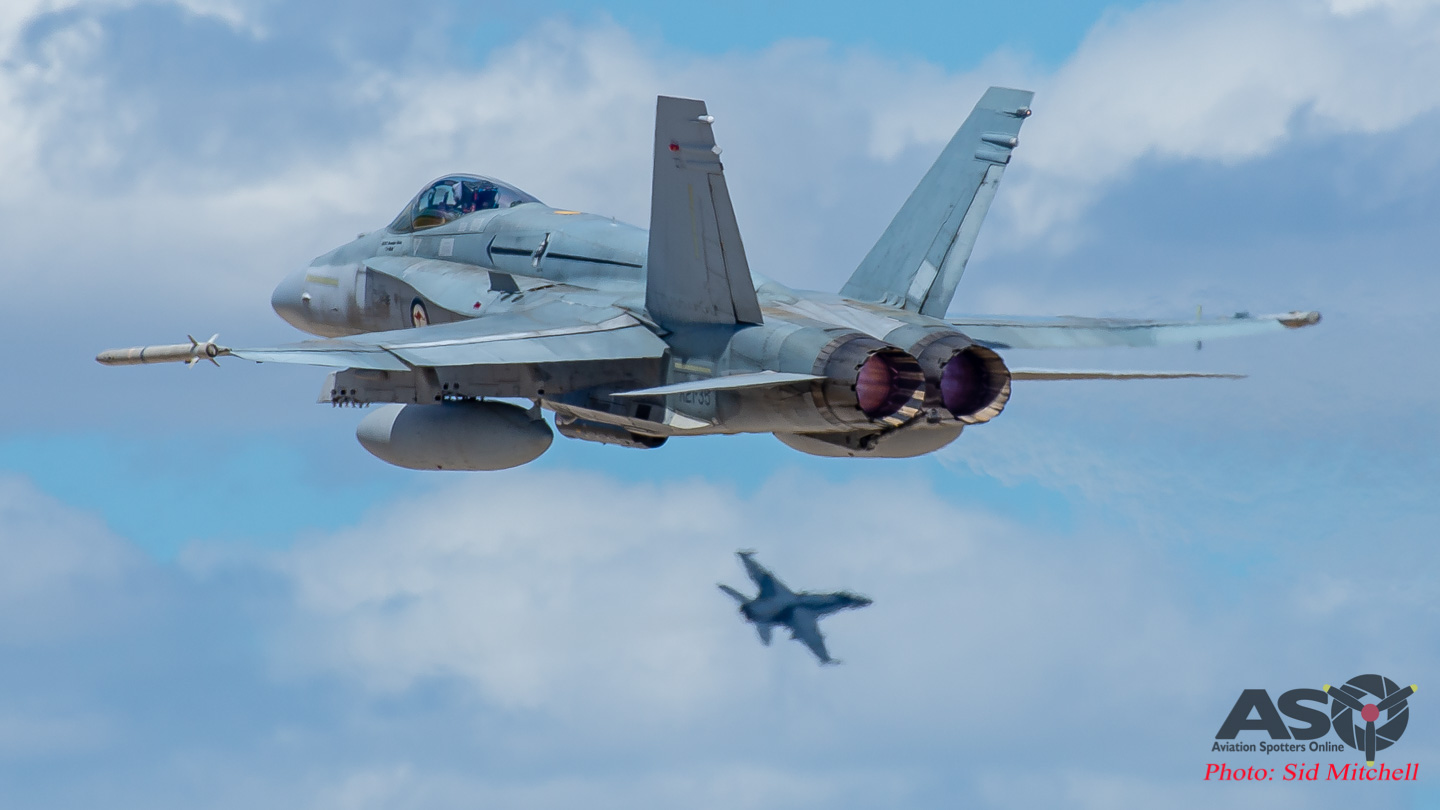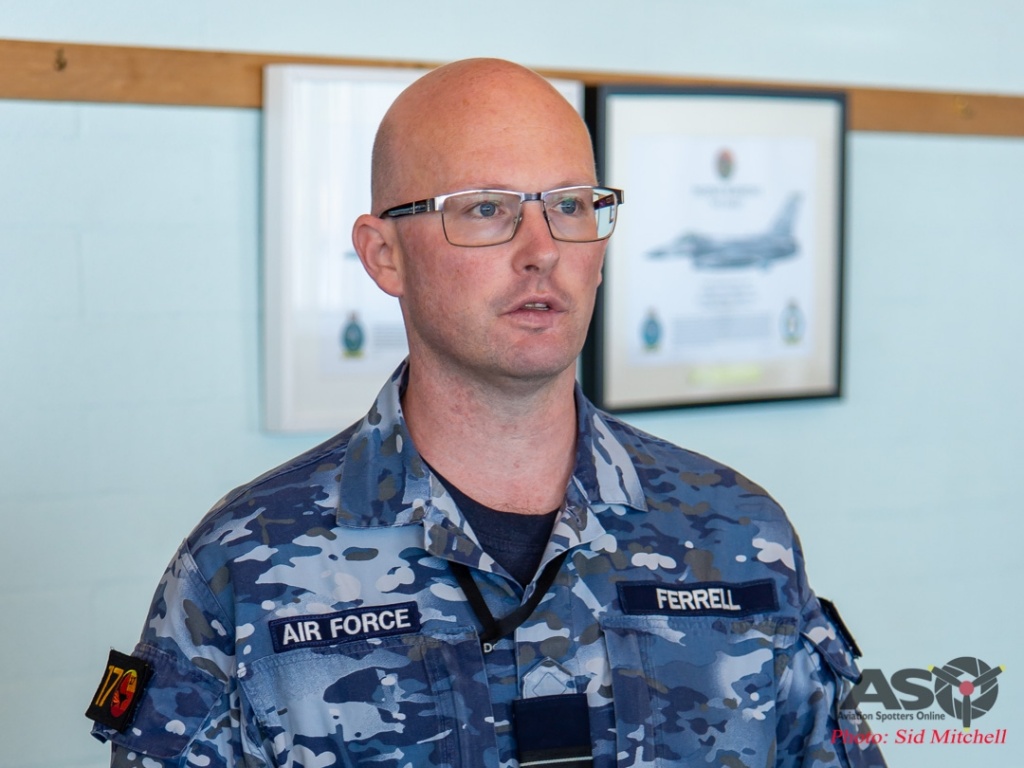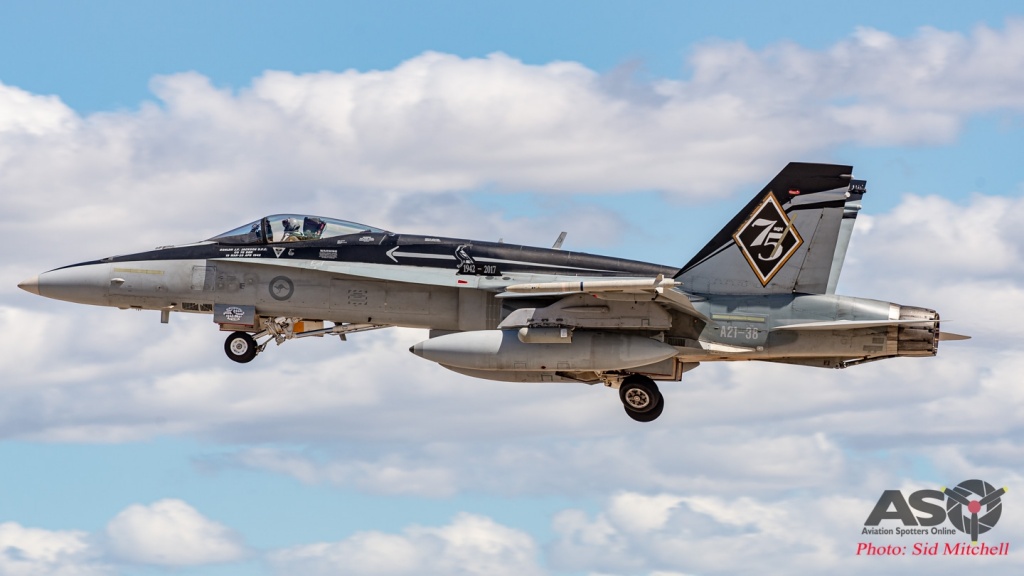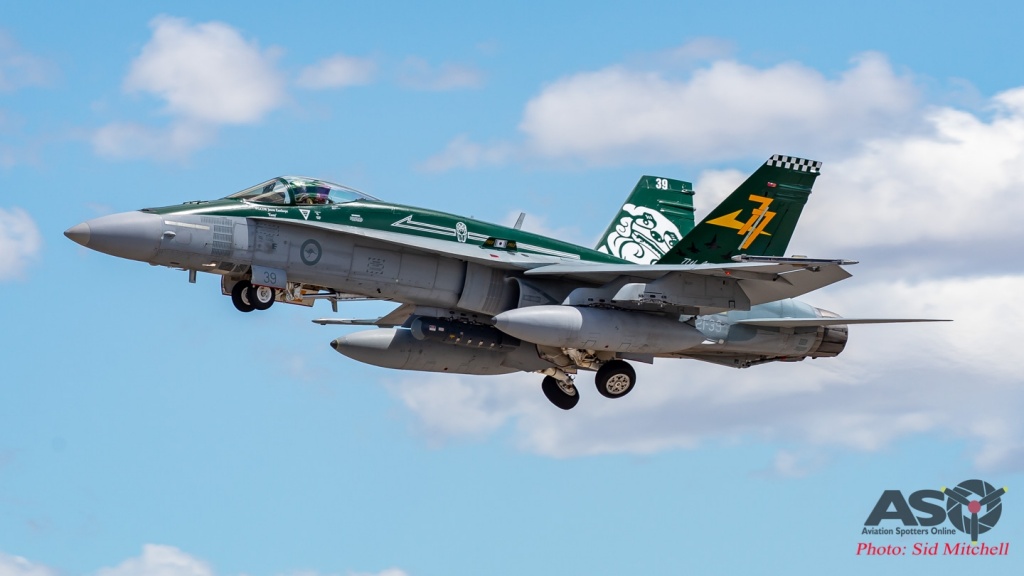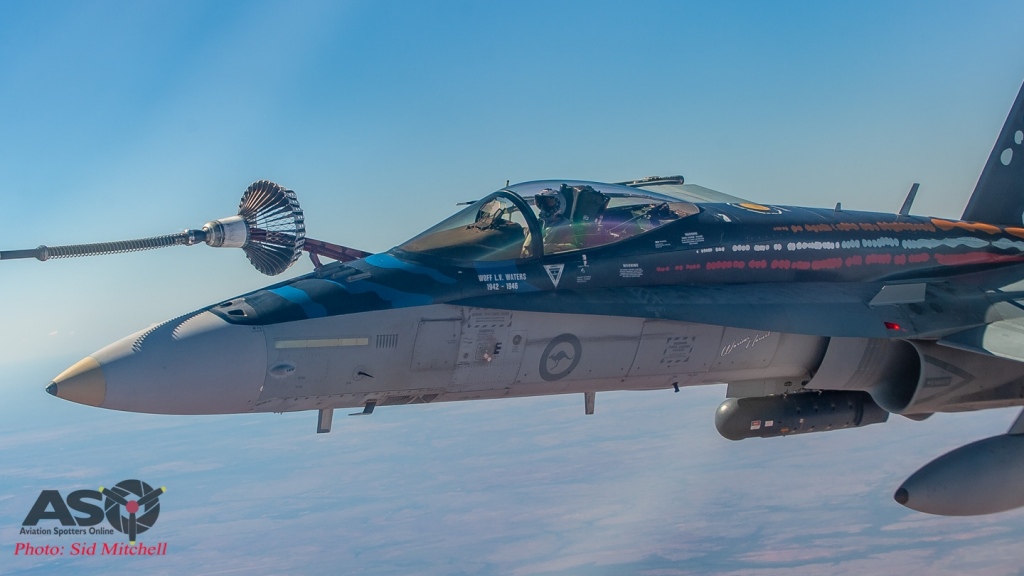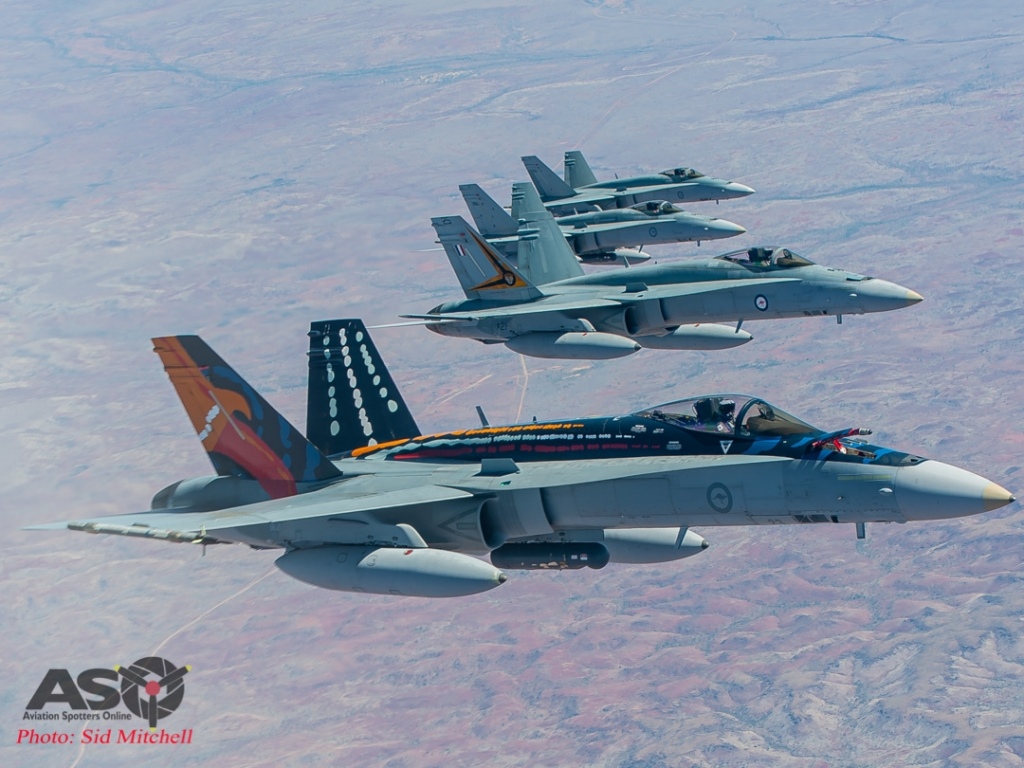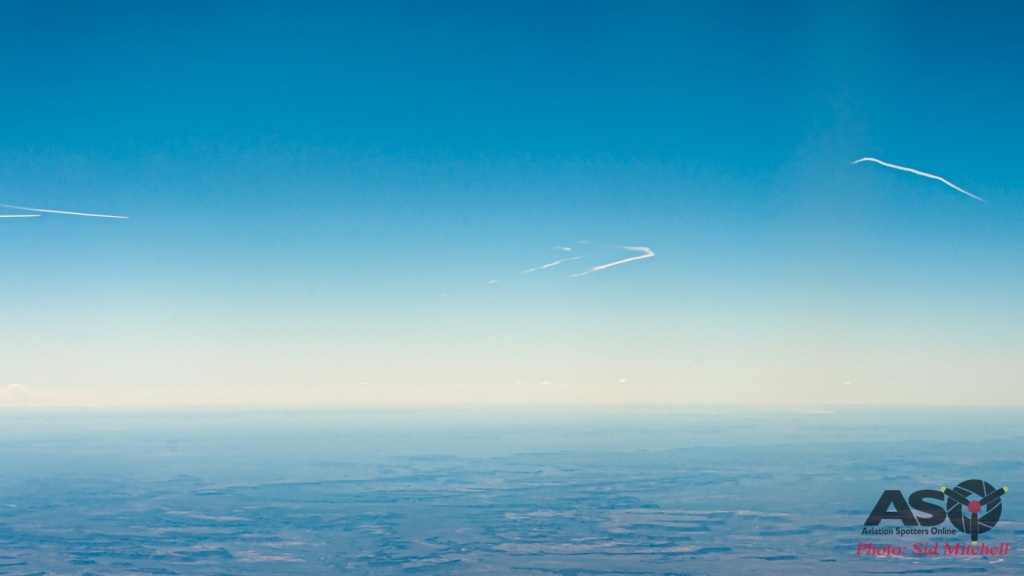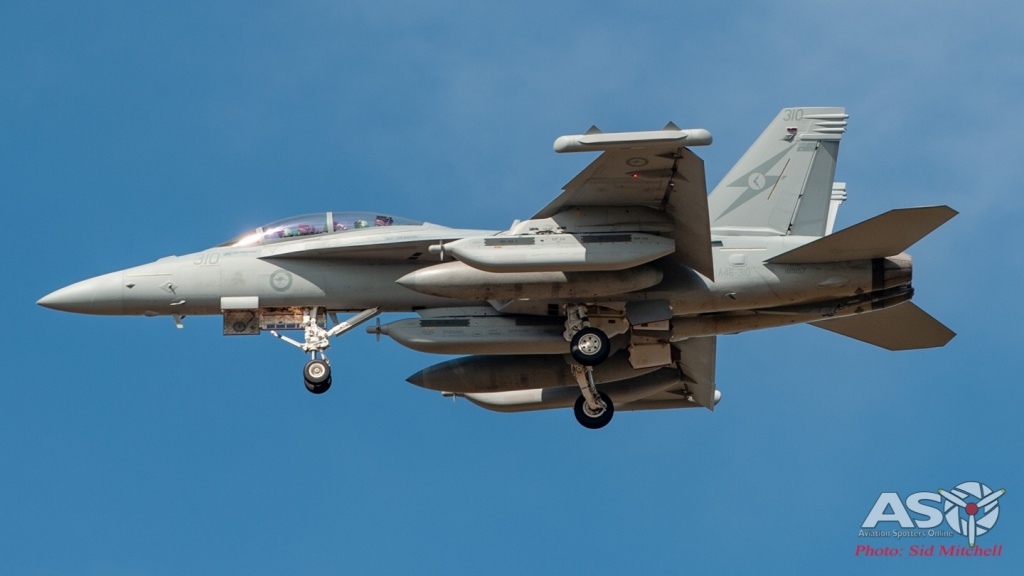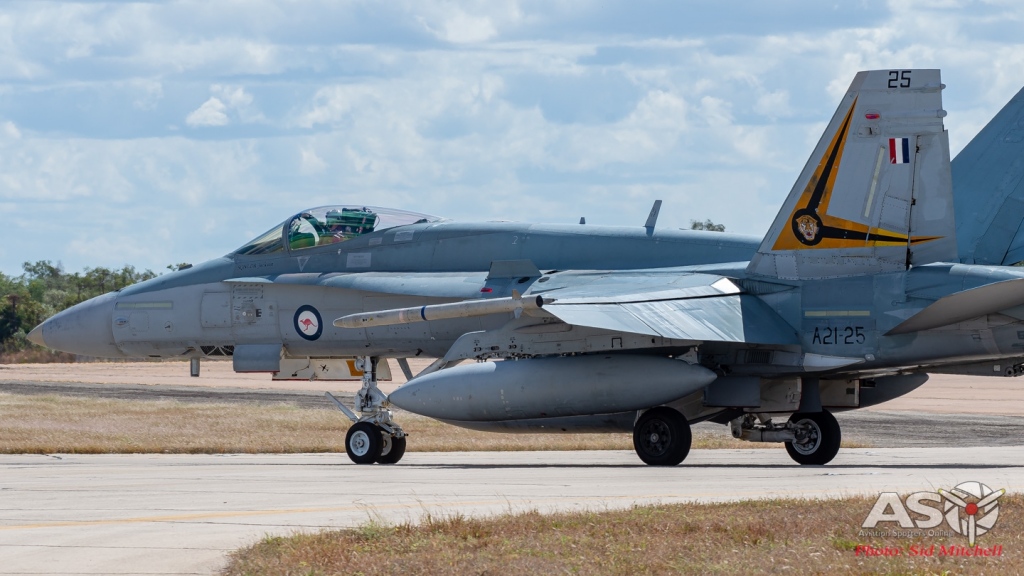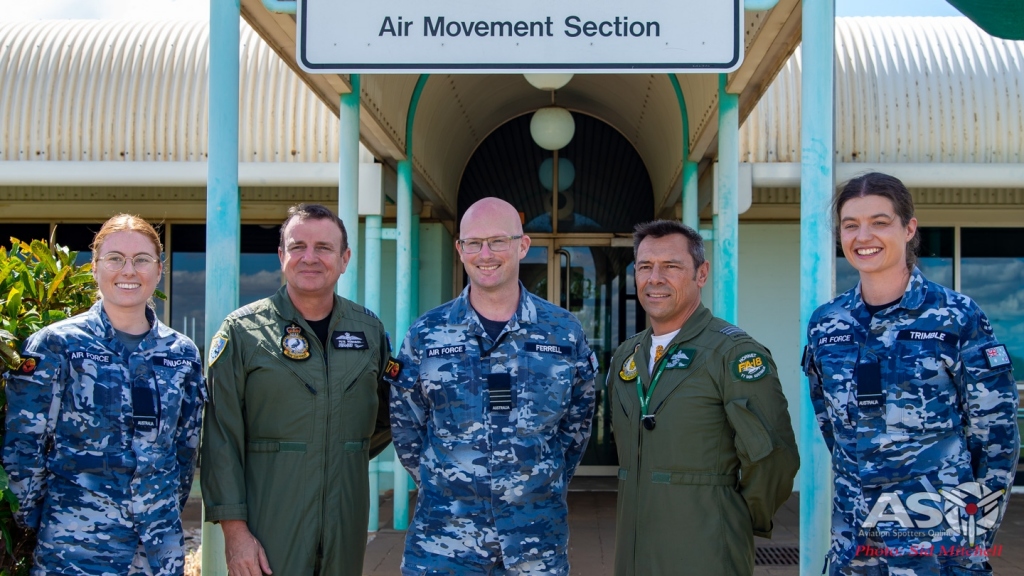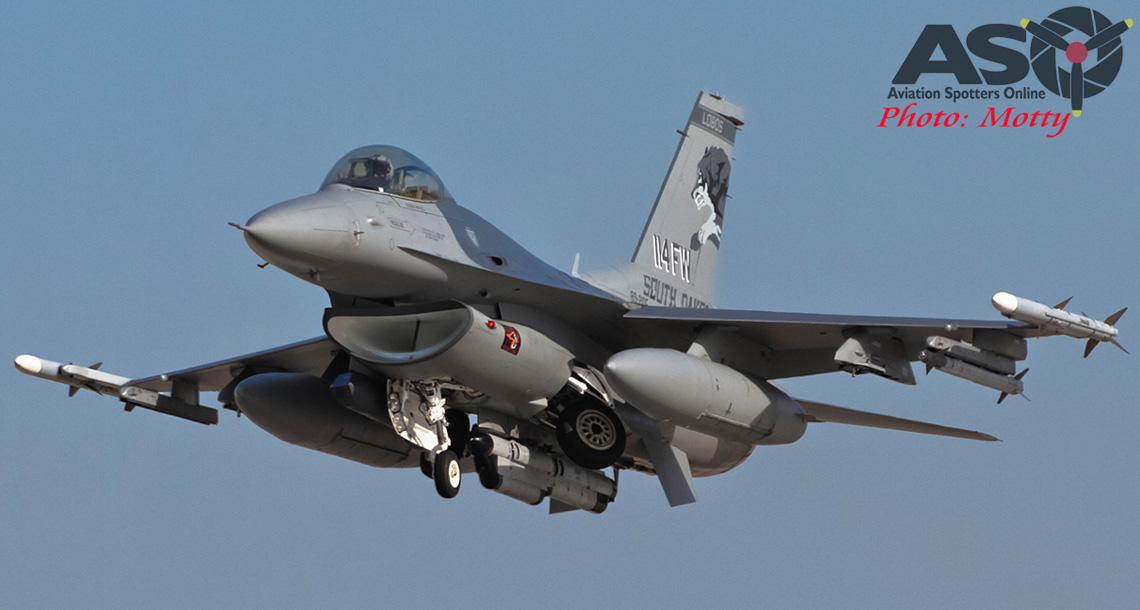In military training exercises there are generally two opposing sides involved – in the case of the Royal Australian Air Force’s Exercise Diamond Storm 2019 it was Blue Air and Red Air.
In this year’s Diamond Storm and Air Warfare Instructors Course (AWIC) Red Air was mostly based out of RAAF Base Tindal, 350km south of RAAF Base Darwin in the Northern Territory.
Some shared assets of Red Air were operating out of Darwin when the mission sets overseen by the Exercise Controller were changed to deliver a variety of scenarios to the participants. Shared platforms such as the RAAF No. 1 Squadron F/A-18F Super Hornets, No .2 Squadron E-7A AEW&C Wedgetail and the visiting United States Air Force 194th Fighter Squadron F-15C Eagles. One new and game-changing platform which appeared in significant numbers this AWIC was the No. 6 Squadron Boeing EA-18G Growler, which was utilised by both Blue and Red Air teams.
RAAF Base Tindal is traditionally the host of Red Air with its home based No. 75 Squadron flying their F/A-18A/B ‘Classic’ Hornets, and this year No. 77 Squadron, based at RAAF Base Williamtown in New South Wales, deployed to Tindal with their Classic Hornets to add to the force. Additional to the dedicated military assets, there were two defence contracted Dornier Alpha Jets from Top Aces out of RAAF Williamtown present also.
The Diamond Storm exercise airspace covered restricted areas of the Top End which included ground ranges such as Delamere Air Weapons Range (DAWR) to the south west of Tindal, and Bradshaw Field Training Area (BFTA) to the West. Other remote areas of the Northern Territory were also used as corridors for entry and exiting the exercise airspace, with some sparsely inhabited locations experiencing temporary low level jet activity – some of it as low as 500′.
On Thursday ASO was invited to attend a media event arrange by Defence Media and the Public Affairs Office. It was a three part visit which included a combined interview with three Wing Commanders, not something you experience every day. The second part was an airside visit with the Base Safety Officer (BASO) to capture No. 75 Sqn and No.77 Sqn Hornets taxi out of the OLA’s and depart Tindal for the exercise airspace. The third was to visit a F/A-18A Hornet in an OLA to capture some static photos. This article covers the first of those three events. Please click Airside and OLA visit to see them.
Meeting the local PAO team FLGOFF Trimble and FLGOFF Finucan as security, we were issued base passes and climbed aboard the bus to take us out to Air Movements.
At Air Movements we were introduced to Wing Commander Tim Ferrell, Senior Officer at RAAF Base Tindal who is the CO of No. 17 Squadron, the base operating squadron, Commanding Officer of No. 77 Squadron, WGCDR ‘Easty’ Easthope and WGCDR Pete Robinson, Commanding Officer of No. 75 Squadron.
WGCDR Ferrell tells us about the challenges faced in supporting an exercise like Diamond Storm and what he expects to gain from it- “We started planning for this about two or three months ago, in relation to food deliveries, fuel deliveries, those sort of things, just planning for what an exercise of this type would need to take place. We’ve got about 300 extra personnel on the base at the moment so well within out capacities to support that and the combat support for the 33 aircraft on the base. I guess for us, what we do here day to day is what we do all the time, supporting 75 squadron, so we surge when supporting 77 Squadron and for me it’s about doing our job safely, say refuelling – there’s more tempo, more people, more trucks. We surge our messes and one of the other things to note is we’re not just servicing Tindal as we’ve got people out at Delamere (DAWR), Pole Hill near Pine Creek and also out at Bradshaw (BFTA). From a military perspective alone we’ve done twenty five thousand meals in the last four weeks supporting this exercise. That’s a lot of meat, chicken, fruit and vegetables…we’ve delivered over 2.5 million litres of fuel. Those are the things we look at and it’s good to get the team planning for an exercise like this. Doing what we do here is what we do overseas on deployment – it’s real world training….so for me, that’s the outcome.”
Commanding Officer of No. 77 Squadron, WGCDR ‘Easty’ Easthope explains about the deployment of No. 77 Squadron to Tindal – ” We’ve brought twelve aeroplanes from our home base down in Williamtown, and we’ve also loaned a couple of our aeroplanes to the squadron up in Darwin as part of this. We have about a hundred and fifty people here up in the Top End in support of the exercise which is quite a big detachment for us but an easy detachment for execution because here (at Tindal), we’re becoming familiar, they know Hornets, the base is set up for it, they know how we work and what we need and we’ve worked together a lot over the years”
“77 Squadron has been on the go since we started with Red Flag over at Nellis Air Force base in the states. We dropped some aeroplanes off to Canada as part of the sale, then back and here into the AWIC which is about to finish – so we’ve been on the go for about five months now. We’ve had a lot of planning over the last six months for what has been a busy year for us so far…. we like being in the Top End, it’s a lovely time of year but everyone is ready to get home and take a break”
WGCDR Pete Robinson, Commanding Officer of No. 75 Squadron which utilises RAAF Base Tindal as their home base, says about this exercise – ” The joy of the Territory at this time of year is the weather but at all times of the year we’ve got this amazing airspace that that allows us to fly our aircraft to their limits, in a large area. We’ve also got some great weapons ranges out there that we can roll into Air-to-Ground training against a number of different targets, we’ve also got simulated Surface-to-Air missile systems on the ground as well. So to bring everything together with the aircraft we have in Darwin, theres F-15’s up there, also we’ve got 2OCU and with 77 Squadron coming up here to be at 75 Squadron, it’s a pretty amazing exercise for us. It’s something different for 75 squadron as usually we’re up here, just ourselves, and we have to generate all our own internal training. When we do have all the additional assets up here we have some amazing things that our aircrew get to deal with. Just the size of the exercise also goes down into our logistics, our maintenance, our administration personnel, as they get to see the base operating to it’s full extent in what is a significant exercise – it’s fantastic”
“Right across Air Combat Group (ACG) whether its our classic F-18’s from either 2OCU, 77 or 75, or the 1 Squadron Super Hornets and the 6 Squadron Growlers, we do a lot of work to integrate those together so that we can bring each of those aircraft’s strengths and capabilities to be better as a sum of all parts, and that’s something we’ve been putting a lot of effort into and these sort of exercises are where we get to see that in full action”
WGCDR Easthope adds – “And to round that off, during this exercise from the Operations and Maintenance, we are quite willing to flex – one day I could be flying a 77 Sqn tail on a mission with 77 Sqn pilots and the next day I’ll be in one of the Magpie jets (75 Sqn) with one of the Magpie wingmen, operating out of their facilities. So we just swap from one day to the next”
“This exercise Diamond Storm is the whole of Air Command plus some joint enablers participating so it’s massive, not just an Air Combat Group (ACG) activity, even though there are a lot of ‘fast pointy things’ around here (he says with a grin), it’s a whole of Air Command effort here with a lot of joint enablers. The challenges are actually just the logistics of it because even a simple fighter squadron draws a fair amount of resources from support but we’ve got multiple squadrons from multiple FEG’s (Force Element Groups) all up in the Top End, all with a lot of people, so you can imagine what the logistics footprint is like. And then you’ve got coordination – lines of communication that don’t get used every day between FEGs into Air Command and high Headquarters, into ground based special services, like our SAS brethren. So there are challenges just with communication being spread over such a large area – all the way up to Darwin, all the way down to Amberley for some of the assets in the missions so you can imagine what the chains of communication look”
As to further celebrations this year, 2019 being the 77th Anniversary of No. 77 Squadron – “Yes we are going to have our Korean Stringer Parade probably first week of July but we will let everyone know about that”
What would be a typical Red Air mission – “So between the two squadrons we have a mix of Blue Air (good guys) and Red Air (bad guys) as a strike mission for the Classic jets you saw yesterday on the KC-30 wing (KC-30A MRTT Air-to-Air refuelling mission) We saw some of the camera’s come to the windows when the Worimi jet turned up. So it was a South Escort Strike mission for that four ship formation, which was a packet of aeroplanes integrated into a larger mission with the sole purpose of getting into a target area alive, blood the nose of the enemy, break their stuff and fight our way out. We had air-to-air adversary, some of it our brethren pretending to be the bad guy, or girl, plus some air defence assets on the ground trying to shoot us down. That particular mission for the four-ship was a classic South Escort Strike mission nested in a much larger package – as you would have seen other aeroplanes around the tanker (we saw Classics and Supers topping up also) all having a discrete role. The aeroplanes in our arsenal are multi-role but that doesn’t mean we multi-mission them in certain missions, so everyone will have their discrete mission, and on that day it was an Air-to Surface mission to destroy the enemy’s stuff on the ground.”
Preparation of aircraft for the mission – “The night before the maintainers will make sure the aircraft is serviceable and mission ready enough to achieve what is required the next day. About four hours prior to the aircrew turning up they will be looking at oxygen replenishment, fuel, and in particular weapons, and have that aeroplane ready 90 minutes prior to it being handed over to aircrew for the mission”
We saw some contrails the day before within the exercise airspace from the KC-30A, are they a give-away or deliberate tactic to fool the enemy.
WGCDR Robinson explains – ” They can be a bit of both. The way that the missiles work is that the higher and faster you are the longer their range so if you want to get an advantage then high and fast is the place to be but the offset to that you can see contrails but in a real situation you will see contrails of the aircraft and as the missile launch you will see the contrails of the missiles as well”
This is the first Diamond Storm where the new Boeing EA-18G Growler is present – “The Growler fights from both Blue Air and Red Air, supporting our core training that we are doing and also providing us with some problems when we perform the Red Air role. They are an amazing platform and providing some sensational capability for the roles we want to use them in.”
WGCDR Easthope backs that up – “Lets just say that when they’re in Red Air operating, we are thankful they’re on our side… great capability. As for the F-35 in this particular exercise, the JSF will be in it around 2023, might see it earlier, might not. This is the last Diamond Storm for the Classic Hornet. You will see Classics in the next one in two years time and then that’ll be it.”
WGCDR Robinson continues on the subject of the classic phasing out – “There’s plans in place for us to make sure that when 75 Squadron is the last Classic Hornet squadron, which will be 2021, we have all the logistics support to make sure we can get the aircraft through to that planned withdrawal date which is December 2021.”
The Diamond Storm exercise pace is flat out and WGCDR Easthope is immensely proud of his team – “We’ve been charging hard and I met up with the whole squadron yesterday, The exercise is just about done so don’t loose sight of the prize, we’ve got to rage for another 48 hours and then we’re heading home. I just passed on a huge thanks but also a lot of thanks comes from outside of the unit, outside the FEG. The absolute commitment and investment a lot of the Air Command units have put into this force – we know it’s worth it because Air Command gets that next generation of warriors that are able to train themselves and be advisors to the Command. But it’s been a big slog certainly for 77 Sqn in the context of what is a busy year – yes immensely proud to be part of a team that is focussed, right down from our newest AC (Aircraftman) who has joined the squadron only this year”
WGCDR Robinson follows up with – “The quality of the young men and women that we have right across Air Force at the moment and obviously I have a huge amount of pride in 75 Squadron as the Commander, is my third tour here and 75 is a very special place for me. The reality is that if you look at 75, 77, 2OCU and the other squadrons you have, there’s just a quality young men and women that is just sensational. So its the old days when you were just whipping people to get stuff done, now, as they’ve got the thrust already, you’re just giving them the direction where they need to go to. It’s very simple to command and it’s very enjoyable to command because of the quality of the people we have in the squadron.”
So with the session over everyone moves outside to take some pics in front of the Air Movements building after which we thank the three Wing Commanders – It’s not hard to see how they are so respected – they call on their squadrons to deliver results under pressure and learn from mistakes but at the same time are very proud of their respective squadron personnel, and what they have achieved during exercises like Diamond Storm 2019.
ASO wishes to thank the three Wing Commanders who gave up their time to speak with us and the Diamond Storm RAAF media team for arranging the event at RAAF Base Tindal. We look forward to our next visit ‘down the track’ to Tindal in the coming years.
Sid Mitchell
Photographer ASO

